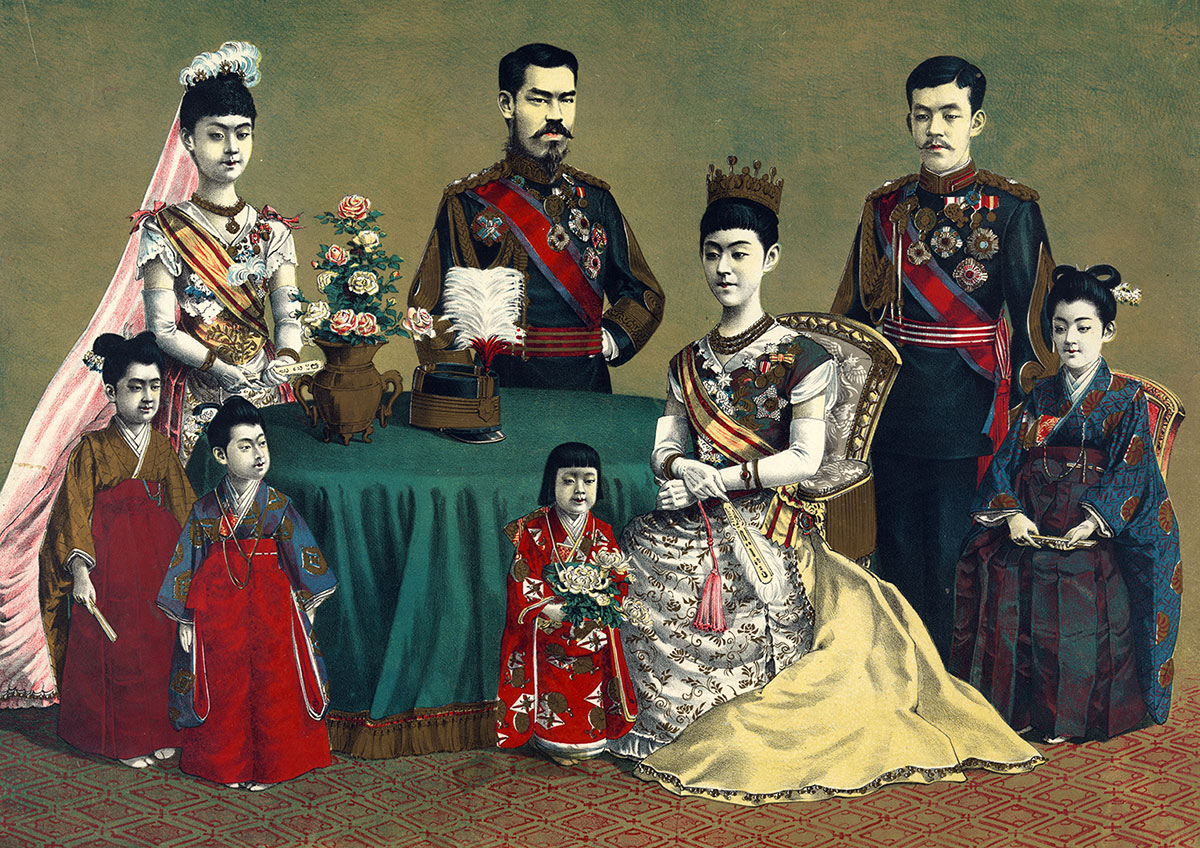The occupation of Japan was wholly American. Despite some strong opposition from American opinion, the emperor was left on this throne, deprived of his divine status, and subjected to the close control of the forces of occupation.
When the American occupation ended in 1952, the Japanese had made a promising start on a democracy of the Western type. Their economy grew so rapidly that it overtook France and West Germany, to rank third in the world after the Untied States and the Soviet Union.
Industrious, efficient, loyal to their employers, and well-educated, the Japanese work force had by the 1970s displaced both West Germany and the United States in many critical areas of the new high technology. Leadership in automobile production also passed to the Japanese, the Datsun overtaking the Volkswagen even in the American market. By 1980 Japanese per capita income was only slightly behind that of the United States.
Signs of change and of affluence multiplied. Programs of birth-control education were successful, and the birth rate dropped, to become one of the lowest in the world. Peasants migrated to the cities, especially to Tokyo, which surpassed London and New York as the world’s largest city until Mexico City moved past it by 1980. Weekend traffic jams resulted from the rush of Tokyo residents to the beaches in the summer and to the ski slopes in winter. Western styles of dress became customary in urban centers. Japanese tourists became known as the most avid and wealthy in the world as the yen soared in value.
Politically, democratic parliamentary institutions flourished under successive cabinets of the conservative Liberal Democratic party. The left-wing opposition, including both socialists and communist, objected to the mutual security pact binding Japan and the United States after the official restoration of full Japanese sovereignty in 1952, but otherwise it lacked widespread appeal.
The greatest strain between Japan and the United States arose over Nixon’s trip to China in 1972. In going to China, Nixon was shaking the foundations of the special American relationship with Japan. And by failing to let the Japanese know about his plan before the public announcement in 1971 Nixon offended them seriously, leading them to ask whether the Americans were preparing to abandon them.
The enormous economic success of the Japanese had stimulated the Chinese fear that Japan would rearm, and Chinese propaganda constantly stressed “renewed Japanese imperialism.” To allay this fear, Nixon concealed his plans from the Japanese, hoping that he could later repair the damage.
But the United States followed the same tactics in proclaiming a series of surprising new economic measures. The president freed the dollar from gold, allowing it to float, and imposed a new customs surcharge on foreign goods. Both these measures were damaging to the Japanese, who were forced to revalue their undervalued currency and whose enormous sales of manufactured goods in the United States would no longer be so profitable.
The Japanese continued to feel betrayed despite all efforts to reassure them. Premier Eisaku Sato (1901-1975), who had presided over Japan’s growth as a world power, now resigned, beginning a period of relative political instability for the island nation. After meeting with Nixon, the new Japanese premier went to Beijing in September 1972, and regular Chinese-Japanese diplomatic relations were established. This meant that Japan would no longer recognize the Taiwan government.
Upon its formal diplomatic recognition of the People’s Republic of China in 1978, the United States also severed relations with Taiwan, leaving this island of 18 million people isolated and fearful. Thus a complex relationship among Japan, mainland China, and the Untied States brought a diplomatic revolution and relative stability to East Asia for the first time since World War II.
Japan’s economic power, combined with a lack of a substantial military force, since the postwar settlement had limited it to self-defense, had proved unique. Protected by the United States, not having to put any substantial part of its national income into arms, prohibited from developing the nuclear capacity for war, Japan had been able to catch up rapidly with its protector.
Now the tension between wishing to continue the economic advantages of such protection and apprehension that such protection was suspect led the Japanese to explore new initiatives. Yet these initiatives were largely limited to new diplomatic and commercial ventures. The Japanese vigorously developed close trade relations with Australia, becoming that nation’s major trading partner, and sent whaling and fishing fleets throughout the Pacific. In 1978 a Japanese Chinese friendship treaty completed the regularization of relations with the old enemy on the mainland.
By 1990 serious strains had opened up between Japan and the West, and in particular the United States. Recurrent political scandals suggested that the lessons of democracy had not been so well learned after all. Clashes over fishing rights and environmental issues complicated the relationship between the two nations.
At the end of the Reagan administration and early in the presidency of his successor, George Bush, “Japan-bashing” became popular in the United States, with Japanese trade practices, its often closed markets, its paternalistic industrial customs, and its culture of hard work and achievement being blamed for America’s relative industrial decline, especially in the automobile, electronics, camera, and computer industries.
By 1994 Japanese political instability was accompanied by signs of economic weakness. Early in 1995 a catastrophic earthquake devastated Kobe, at the center of Japan’s second largest metropolitan complex, taking over four thousand lives and leaving perhaps two hundred thousand homeless, a staggering blow both economically and socially.
Slow and often inefficient rescue and aid operations by the government led Japanese citizens to question the capacity of their bureaucracy more than at any time since World War II, giving rise to the likelihood of greater political turmoil.

